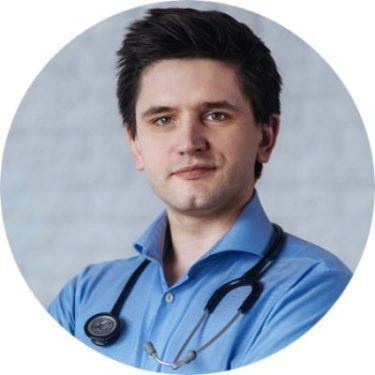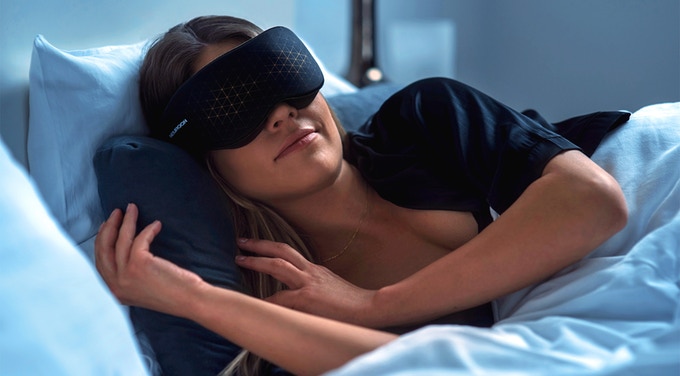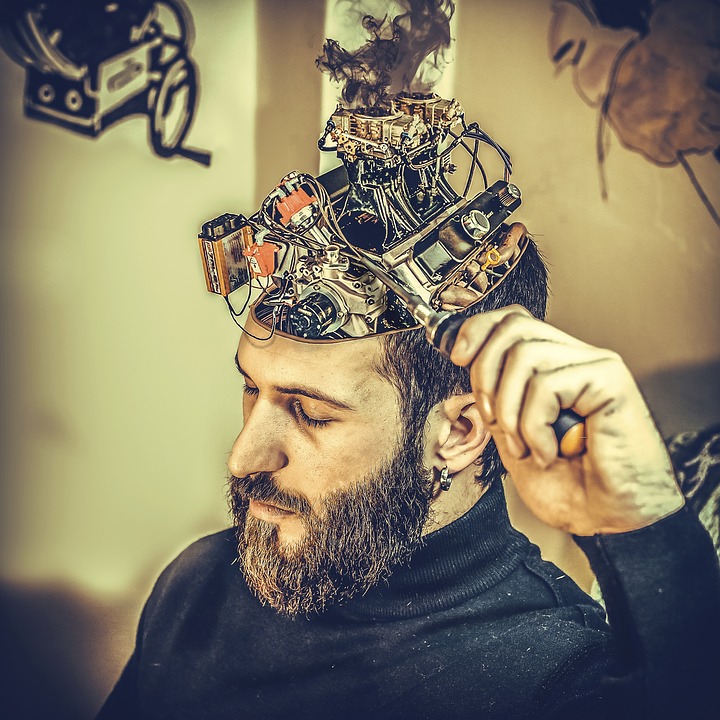Lucid dreaming tech that utilizes cutting-edge gadgets connected to the IoT is pioneering brain research in what is known as consciousness hacking.
“All that we see or seem is but a dream within a dream.” – Edgar Allan Poe
Lucid dreaming occurs when you are in a dream and realize that you are dreaming. The implications of the phenomenon are astronomical as you can actually control your dream world and do things that can never be possible in your waking state, such as the ability to fly or to breathe underwater.
Virtual Reality is already making great headway in this field (forgive the pun), but there is another state-of-the-art gadget that has emerged at the forefront of lucid dreaming tech.
Read More: Virtual Reality Takes Consciousness Research into Mystic Realms of the Divine Play
An open source mask and app for real-time advanced sleep measurement, smart home integration, meditation, and lucid dreaming was able to raise more than $100K in under a day on Kickstarter.
Neuroon Open’s sleeping mask for measuring brain activity, combined with the app, provides audio guided meditation sessions with lucid dreaming induction capabilities.
Founder and CEO Dr. Kamil Adamczyk believes Neuroon will be the next frontier in brain science because it is open source, and its real-time sleep analysis can allow for lucid dreaming.
“I think a device like Neuroon Open can change sleep and brain science for two reasons,” he says.

Dr. Kamil Adamczyk, CEO and Founder at Neuroon Open
“The first is open source. It gives us a huge opportunity of building the community behind the project that supports its development. That is crucial if we want to work on a large scale. What is also really important about open source is transparency. The community can validate the hardware, software, and algorithms. Validation of the device encourages more researchers and users.”
The second reason is because of Neuroon’s real-time sleep analysis and sleep staging accuracy. “Currently, we have algorithms that are really accurate in comparison with professional medical devices [i.e. a polysomnography device],” said the founder.
Dr. Adamcyzk’s team has been working with University of Essex researcher Achilleas Pavlou on this project, whose Ph. D. thesis is on lucid dreaming induction.
Lucid dreaming is thought to be a trainable skill that has been demonstrated to increase through the use of cognitive and external stimulation techniques. Both techniques are features of Neuroon Open.
“I really think this is the way forward for brain science,” Adamczyk continues. “For years we had to use massive machines that cost hundreds of thousands of dollars and now anyone can buy a little face mask to see if they are having seizures in their sleep or create a lucid dreaming experience.”

You can easily sleep on your side with Neuroon Open
The front of the mask is made of a soft vinyl while the foam is made from polyurethane. It includes EEG and EOG sensors, and the battery lasts some four to five days. It can also hold up to seven days’ worth of biometric data.
With 18 days still left to go, Neuroon has more than doubled its second Kickstarter goal of $100K at the time of this publication.
Lucid Dreaming for Consciousness Hacking
“If one advances confidently in the direction of his dreams, and endeavors to live the life which he has imagined, he will meet with a success unexpected in common hours.” – Henry David Thoreau
The incredible work of Dr. Adamcyzk, who is also a TEDx speaker (below), has opened William Blake’s “Doors of Perception” into whole new realms of lucid dreaming tech.
To be clear, the following information does not come from the good doctor, nor from the team at Neuroon, but is rather more of an in-depth look at some of the more conscious-altering functions of lucid dreaming that Tibetan Buddhists have practiced for centuries.
According to Dr. Berit Brogaard in Psychology Today, “Lucid dreaming is your chance to play around with the extraordinary abilities buried in unused parts of your brain.”
One of the most recognized researchers in Lucid Dreaming is Dr. Stephen LaBerge, Founder of the Lucidity Institute, and the first scientist to empirically prove the existence of the phenomena of lucid dreaming.
In his book, Exploring the World of Lucid Dreaming, he not only provides techniques for entering such a state, he also provides real-world examples of how lucid dreaming actually helps ordinary people better themselves in waking life.
In lucid states of dreaming, you can confront your worst phobias in a completely safe environment, do battle with your enemies, or even overcome your fear of heights, closed-spaces, or whatever else that ails you.
One practical application that really stood out when reading Dr. LaBerge’s book was an example of how someone who was trying to cut back on over-eating found the solution through lucid dreaming. Below is an excerpt:
A few years back I was trying to lose weight. I would dream that I was in a grocery store, bakery, or restaurant, and food was everywhere. I was conscious that I was dreaming and therefore could eat whatever I wanted. I proceeded to pig out on the feast before me, even tasting the food. These dreams would satisfy my craving to gorge myself. I would wake feeling satisfied—not full, but satisfied— and if during the day I got the urge to eat something I shouldn’t I just thought, “I’ll eat it tonight in my dream,” and I did!
That’s just one out of countless practical examples of lucid dreaming bettering everyday life; however, let us continue into some truly bizarre and mind-blowing shit here.
Read More: Terence Mckenna’s ‘cyberdelic’ predictions for Virtual Reality 25 years on
Lucid Dreaming and the Tibetan Book of the Dead

“Dreams are more real than reality itself, they’re closer to the self.” – Gao Xingjian
First of all, if you are more inclined to learn about lucid dreaming online, the World of Lucid Dreaming website is about the most comprehensive source on the subject you will ever find.
That being said, let’s get freaky and delve into the divine realms of life between lives as lucid dreaming pertains to Tibetan Buddhism.
In the Tibetan Book of the Dead one must journey through the intermediate states of life after death and before rebirth where the dreamlike landscape can be confusing, terrifying, or even blissful, depending on how virtuous a life was lived on the so-called three-dimensional realm of existence.
Learning to navigate this invisible landscape of life between lives with absolute clarity is essential as the soul encounters various monsters, blood-drinking deities, and mystical places that appear to be welcoming at first, but will only welcome suffering and confusion in the long run – places like Tolkien’s Fangorn Forest from The Lord of the Rings or the swamp where Atreyu’s horse Artex dies in The Neverending Story come to mind.
Learning to recognize what is real and what is an illusion is critical to Tibetan Buddhism because as humans, we are creatures of habit, and it is very hard to break old beliefs and habits once they’ve become hardwired in our brains.
One of the best ways to tune your consciousness to distinguish truth from preconceived and false realities is to dream lucidly. As a bonus, this also helps to recognize bullshitters in everyday life!
This practice can help prepare oneself for when consciousness leaves the mortal body for the last time, so that it is ready to face whatever spiritual tests come its way.
The same is true in the Egyptian Book of the Dead, where the deceased’s heart is weighed against a feather to measure its purity in life. If the heart weighed more than the feather because of past bad deeds, the soul was devoured by a crocodile-headed monster. If the heart weighed less than a feather, then the soul could continue on through the afterlife.
Of course, you don’t have to believe any of this, but if you’ve ever had a lucid dream or have had mystical encounters through altered states of consciousness, then this will definitely hit home.
Final Thoughts on Lucid Dreaming Tech

“A dream is a microscope through which we look at the hidden occurrences in our soul.” — Erich Fromm
As a journalist, it is my job to report the news. As a human who loves tech and how it relates to exploring consciousness, it is my delight to share the news about lucid dreaming tech as a storyteller from one person to another.
Read More: Why Tech Needs its Own Mythology Now More Than Ever
You don’t have to believe in reincarnation to benefit from lucid dreaming, and you don’t have to use lucid dreaming tech to achieve it.
Lucid dreaming tech, such as Virtual Reality or Neuroon’s sleep mask, is just another way of doing what people have been doing for thousands of years.
The difference with lucid dreaming tech is that it can streamline the process. It is consciousness hacking. It is another way of reaching a state of consciousness that is made readily available to the public without undergoing some sort of initiation into a religion, or without having to take psychedelic substances.
According to LifeHacker staff writer Patrick Allan, “Lucid dreams can be more than escapist fantasy, but in order to reap the benefits of your slumbering mind, you must first tell your brain that your dreams matter.”
Some people can achieve lucid dreaming by keeping a dream journal, meditating, or taking the time every day to ask, “Is this a dream?”
If you keep asking yourself during the day, “Am I dreaming?” you will eventually ask that question in your sleep, and you may soon find yourself lifting off to explore all the castles of your imagination.
How do you know that you are not dreaming at this very moment? Have you awoken from a dream in which you were a butterfly, or are you really a butterfly dreaming of being human?
Through the practice of lucid dreaming, with or without lucid dreaming tech, you should finally be able to answer the question once and for all, “Is this all just a dream?”
I dream’d in a dream I saw a city invincible to the attacks of the
whole of the rest of the earth —
I dream’d that was the new city of Friends —
nothing was greater there than the quality of robust love, it led the rest —
it was seen every hour in the actions of the men of that city,
and in all their looks and words.
Walt Whitman, Leaves of Grass












